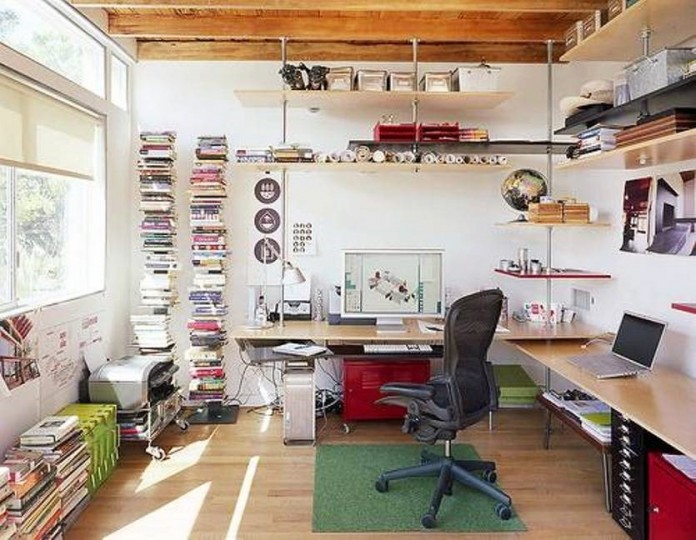For freelancers and professionals who work from home offices, back and neck pain is a very common frustration. This is because most workstation arrangements are far from suitable. People either work slouched on their sofa, cross-legged on the floor or from a desk which is too short and forces them to constantly crane their neck.
If you do spend long hours operating from a home office, it is essential that you sit upright (without slouching) in a chair with proper lumbar support. Computer users need to place the monitor at the right height so that they don’t have to bend their neck to view it. Feet should be flat on the floor and the room should be well lit to avoid eye strain.
This guide to increasing the ergonomic value of your home office will help you minimise the risk of aches and pains.
Use the Right Monitor Stand
The correct single or dual monitor stand can make a big difference to how you sit while working at a computer. The best products are fully adjustable so that you can tilt and raise (or lower) the monitor until it is sat at the perfect height. Ideally, you should be looking directly at the address bar when you gaze forward, with your head level.
Consider an External Keyboard
It is now more common for freelancers and ‘at home’ professionals to work from laptop computers, rather than full-size tower configurations. They are lightweight, compact, and can be picked up and transported anywhere with little fuss. However, they are not kind to the body, particularly after long periods of use. To keep your neck healthy, you really should be using an external keyboard, because your hands shouldn’t be positioned too close to the screen.
Invest in a Truly Great Chair
If there is one item that you shouldn’t skimp on when putting together a home office, it is a high quality, ergonomic chair. A chair with lumbar support, adjustable components, and a sturdy, slide resistant base can do wonders for the health of your spine. The perfect chair will allow you to keep your feet flat on the ground at all times, without forcing you to lean too far forward or crane your neck.
Eliminate Mess and Clutter
The fastest way to distraction and procrastination is a messy, cluttered work environment. You might tell yourself that it doesn’t matter, but the reality is that an untidy office leads to a similarly untidy mind. This is particularly true for the state of your desk. Make sure that it doesn’t become littered with empty coffee cups, snack wrappers, documents, or office toys. Keep it reasonably clear, aside from maybe a photo or two, room for a drink, and any stationery that you might need.

Adjust Your Perspective
Making changes to your home office can only do so much. You have to actually utilise all of these tools in the correct manner if you want them to have an impact. This means making a conscious effort not to slouch in your chair, even when tired. It won’t make you feel any better; you’ll just end the day with nagging pains in your neck and pressure on your lower back. Remember to light the room properly too, as a dim office will put great strain on the eyes.
Why Small Lifestyle Changes Can Have a Big Impact on Health
You don’t have to spend a lot of money or invest in the most advanced office accessories around to improve the ergonomic potential of your work environment. Things like lumbar cushions, computer monitor stands, and external computer devices are more affordable than you might think. They allow professionals to operate in comfort and offset many of the physical issues that can be caused by sedentary work habits.
Find a Home-Based Business to Start-Up >>> Hundreds of Business Listings.


















































